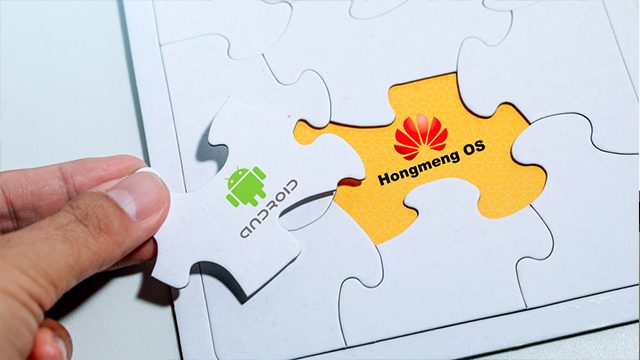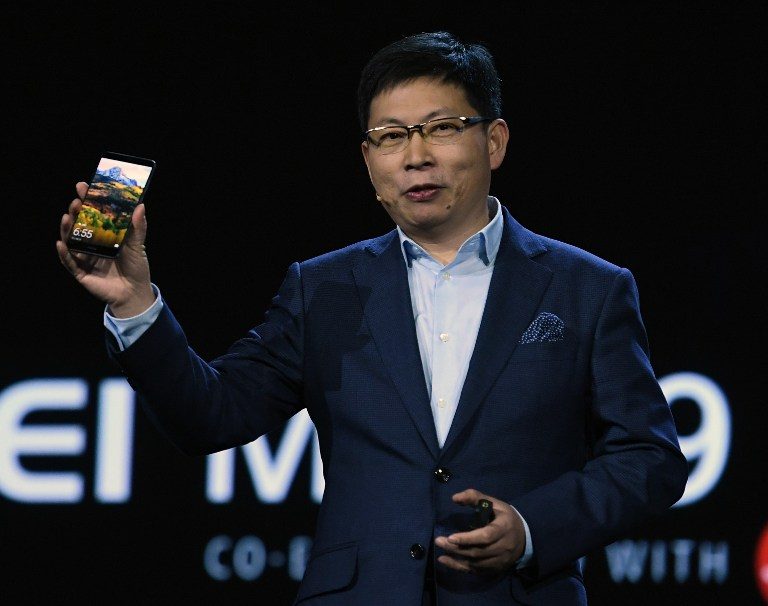SUMMARY
This is AI generated summarization, which may have errors. For context, always refer to the full article.

MANILA, Philippines – With Google pulling Huawei’s Android license, the Chinese tech giant has gotten closer to using their own operating system (OS) on their phones.
Before the Google decision, Huawei already made it known it had been crafting its own OS.
In March, their consumer business head Richard Yu, said in an interview with a German publication Die Welt: “We have prepared our own operating system. Should it ever happen that we can no longer use these systems, we would be prepared. That’s our plan B. But of course, we prefer to work with the ecosystems of Google and Microsoft.”
Around that time, Huawei pleaded not guilty to alleged violations on Iran trade sanctions, and in February, pleaded not guilty to charges that they stole secrets from US telecommunications company T-Mobile.
Earlier in December 2018, Meng Wanzhou, the company’s chief financial officer and daughter of founder Ren Zhengfei, was arrested in Canada and is currently fighting extradition to the US.
These show that prior to recent escalations, the US campaign against Huawei was already in full swing, and Huawei was getting ready for possible disruptions in business, including the loss of American software partners like Google and its Android OS.
Enter HongMeng OS – Huawei’s alleged “Plan B” OS, the possible replacement to Android and maybe even Windows, which Huawei uses on its laptops.
Here’s what we’ve dug up so far.
1. Likely launching “this fall or no later than spring 2020”
Richard Yu, according to the state-owned Chinese newspaper Global Times (which cites a document they viewed) said Huawei’s “homegrown OS” will be launching within that time period – September 2019 to the end of May 2020.
If it hits the earliest release date, only a week will lapse between the end of the 90-day Google reprieve and the homegrown OS release, allegedly called HongMeng.
2. They’d still prefer Google and Microsoft software
Yu was quoted in the same Global Times article saying the company was “willing to continue using Google and Microsoft [software]” but that it has “no other choice [than to develop its own system].”
It echoes Yu’s earlier statement in the German magazine.
3. It will be a universal OS across multiple device types
Global Times, citing Yu, also said the OS would be a “comprehensive system” to be used on “Huawei’s smartphone, PC, tablet, TV, automobile, and smart wearable device” and will be compatible with “all Android apps.”
By comparison, Google has Chrome OS for Chromebook laptops and Android for mobile; Apple has iOS for phones, and MacOS for its computers; and Microsoft had Windows Phone for, well, phones, and Windows for PCs.
It’s unclear how universal or “comprehensive” the OS will be for all device types but at the very least, it’s fair to expect a great degree of interoperability like how iPhones are to Mac computers.
Huawei’s own-developed smart phone Operating System, reportedly named "HongMeng OS", is being trialled out and will gradually replace the Android system, according to three Chinese media reports. pic.twitter.com/GacM5xQMYJ
— Global Times (@globaltimesnews) May 20, 2019
4. It’s currently in trial
It’s not a surprise that the OS is already in trial. Huawei first arrived in the US in 2001, specifically Valentine’s Day, Fortune says. It hasn’t exactly been a love story as US espionage concerns first came to light in 2012 when US Congress investigated the company – although reports produced no evidence as well. The company has had time to mull over the fact that their relationship with the US isn’t very pretty, and they had to be ready.
5. Acknowledging difficulties
Founder Ren Zhengfei admitted there were difficulties with a new OS on Tuesday, May 21.
“It’s not a difficult task to come up with a new OS, but it’s difficult to build up an ecosystem for that,” he said. He added building the ecosystem should be taken “step by step.”
Industry analysts echo the sentiment. It said that beyond the technical challenges, it’s going to take years to build trust and confidence among app makers to make software for them, and to get users to adopt.
Ryan Whalen, deputy director of the Law and Technology Centre at the University of Hong Kong, cited failures from other companies: “Just look to players like Nokia, BlackBerry and Microsoft that have all failed recently in similar endeavors.”
6. Development of the homegrown OS may have begun in 2012
Coincidentally, that’s the year when the US Congress report on Huawei came out.

Huawei Central, a media website that says that it works closely with Huawei, cites a source from China saying HongMeng had been in active development since 2012, but couldn’t confirm whether HongMeng is a codename or will be the actual name.
Huawei Central has several other claims, including that HongMeng was “using this operating system in its mobile phones potentially hidden behind the curtain” and that it will be compatible with all Android applications. We’ll take these statements with a grain of salt for now though as it cites no definitive source that can lend credence to these huge claims.
7. The homegrown Huawei OS was first rumored to be called Kirin OS
Before reports recently came out naming the new Huawei OS as HongMeng, there had been reports of a Kirin OS, named after Huawei’s family of smartphone processors.
During better times between the US and Huawei, Huawei launched the P8 Lite in 2015 in the US – around the same time that a rumor about Huawei developing its own OS came about.
8. Huawei’s app store may already be in your phone
Bloomberg reports that Huawei’s App Gallery, introduced to Huawei phones outside of China in early 2018, represents Huawei’s attempt to build its own app store way before the Android ban.
Bloomberg said that Huawei has been pitching developers to “tailor their existing Android apps for its App Gallery store,” with the strategy being focused on Europe, its second-largest market outside of China. The company reportedly talked to European telcos about the Gallery, proposing revenue sharing in exchange for having the App Gallery pre-installed on phones. An app store can only be successful with the support of the other players – other phone makers, service providers, and the app makers.
Citing internal documents and 5 people they’ve talked to, Bloomberg said that the company promised marketing support and “China app store exposure” for developers who promised to support the store. The company also reportedly promised app makers a tool that will allow developers to port their apps from Google’s store easily. – Rappler.com
Add a comment
How does this make you feel?
There are no comments yet. Add your comment to start the conversation.